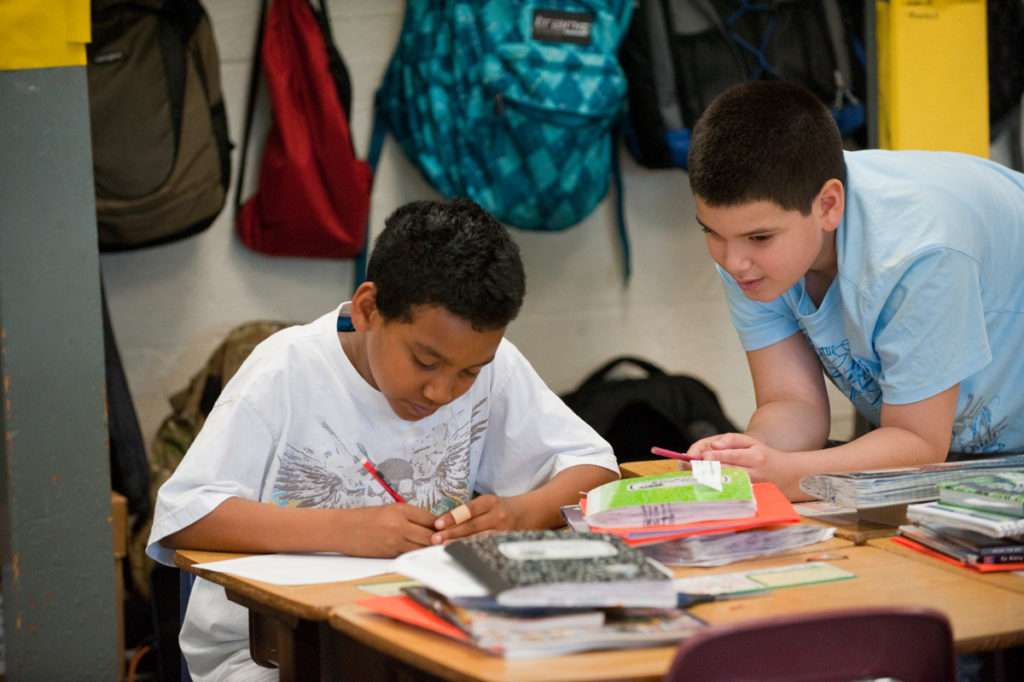
In my previous post, I talked about the importance of incorporating movement into classroom work and gave an example of one way to do that with an editing activity. In this post, I’d like to share a way to add movement when the class is reviewing material right before a test. It’s a strategy my co-teacher and I decided to use just recently, when our class came to the end of a challenging social studies unit.
With the test a few days away, we were looking for a livelier and more effective way to review the content than having students complete the end-of-the-chapter review questions in their notebooks. We’d done that for the last unit, and we weren’t happy with the number of off-task behaviors we saw: Students fidgeted in their seats, talked with neighbors, and only partially completed the assignment. They weren’t engaged, and they weren’t learning as much as we knew they could have—as their test results clearly showed.
We had a hunch that too much seat time was the problem, as it had been in similar situations recently, and we wanted to manage students’ off-task behavior proactively this time around. So we used an activity that would get students up and moving around the room while answering review questions.
We’d already used our “Walking Quiz” to preview content—to teach vocabulary words or pre-assess a skill—and seen the physical and academic benefits it provided for our class. We thought it could also get students focused and engaged in reviewing content before their test as well. And it worked!
We began by reviewing our expectations for the activity. Then students wrote the numbers one through twenty on their answer pages. We set the timer for five minutes and the action began. To an outsider looking in, it may have looked like a chaotic classroom. However, students were active and engaged in reviewing the content. We noticed students moving around the room in an orderly way, working through the questions, and staying on-task, and we even observed some students smiling along the way! At the end of the activity, when we reviewed the answer sheets, we noticed that some students had circled particular words and ideas they wanted to review later that night. Most importantly, many of our students excelled on the test the next day. This activity was a physical and academic success! Here’s the how-to:
Make sure you have as many question cards as you have students in your class. At the conclusion of the Walking Quiz, each student retrieves a card from the wall and takes it back to their seat. When reviewing the answers as a class, students take turns reading their question and calling on a classmate to provide the answer.